LARGE BLOCK RB22 225 CYLINDER
The RB22 is AF Rayspeeds 225 Reed Valve cylinder aimed at replacing the older TS1 225 cylinder. The RB22 comes with a piston size of 70mm and is graded as with the TS1 at A, B, C, D.
But how much difference is the RB over the TS1?
As with the TS1 the RB is made from alloy and is Nicasil plated but is now made by Airsal of Spain where as the TS1 is made in Italy, apart from they both fit in a large block casing the similarities stop there. When you pick up the RB cylinder for the first time you see nothing but ports, it resembles an old style Motocross cylinder rather than a Lambretta cylinder! The cylinder kit uses the same piston as a TS1 and the same style cylinder head after that apart from using a 34 – 35mm carb nothing else fits, everything is different.
RB CYLINDER DIFFERENCES
There are some main designs differences with all RB cylinders, lets compare it to the TS1 it’s main rival.
EXHAUST PORT
The RB range of cylinders use a different designed exhaust stub which now points towards the rear of the bike, the studs are the same, as is the gasket of a TS1 but the exhaust is different and needs to be changed or you need to modify an older exhaust. Why the flange was altered I’m not exactly sure, maybe it was thought that gases come out of the exhaust port at a better angle like the Small Frame Vespa or maybe it was done to increase exhaust height from the floor. Either way I get more power from standard style TS1 flanges. I also tried this sloped flange on my own TS1 power valve cylinder and it made no difference over a standard style flange, it just caused a problem when dynoing as all the exhausts needed altering to suit. Today there are a number of good exhausts made to suit the RB cylinders.
Looking at the exhaust port in the cylinders bore and you will notice two auxiliary smaller exhaust ports either side of the main exhaust with a thin bridge between the main ports. This is similar to my old 40bhp engine where I did the same but moved the sub exhaust ports around the main cylinder studs. The RB squeezes the 3 ports between the main cylinder studs so really the new exhaust port hasn’t gained very much exhaust port area compared to a tuned TS1 exhaust port. All 3 ports are level with each other and give around 185 – 188 degrees, similar to a TS1 standard/tuned exhaust port.
TRANSFER PORTS
The RB uses two transfer ports each side of the bore giving 4 in total, like the TS1’s design but the RB transfers are wider and taller giving, on our jig a massive 136 – 138 degrees timing! The transfer feeds are a similar size to a TS1 and ideally needs the casings matching to suit.
BOOST PORTS
The RB has increased from one boost port to two boost ports to increase area.
INLET PORT
The inlet port is now much larger compared to the TS1 it now houses a totally new 8 petal reed block with 6 mounting points. For the reeds to fit, the casting around the inlet is larger, this helps to feed the newer Boyesen port feeds into the 2 transfer ports which is similar to many modern 2-stroke cylinders.
REED VALVE
The RB uses a design like the V-force Reed blocks but goes one step further with a very clever designed split reed block where each side uses 4 petals and as it’s pushed in place in the cylinder it clips together. The reeds are made of black carbon and up to date there are no modern standard replacement which will fit without modification.
INLET MANIFOLD
The RB uses a totally new inlet manifold to suit the 8 petal reed block and is designed – again like the TS1 which comes out on the left hand side and is designed to fit a 35mm TMX, 34mm Amal or a 34mm Dellorto with a stepped rubber.
CYLINDER HEAD
There has been a few versions of the cylinder head which are still machined as AF has always done. Heads could have been a modified Indian head or the newer AF head either in low or high compression versions.
The style of porting layout and port timings make this kit an on off kit in terms of power, some say they are really powerful low down but I have haven’t seen a dyno graph to prove this compared to many other kits which are more suited to low down torque. The RB is a race kit, it’s not designed as a touring kit. With the porting spec the power kicks in at around 5 – 6000rpm and takes off when the porting and exhaust comes on song. This instant power is so harsh people love the RB for a fun thrash bike. But there are problems in the design as I see it. The porting spec is wrong and can be improved to either help power spread or increase power. It’s thought that the new Boyesen transfer port feeds from the inlet port into the transfer port stops oil fuel lubricating the big end bearing, I’m not convinced this is really the case. If the crank has a good rod, shim and bearing arrangement with good oil there should be enough oil mixture to lubricate the big end and bore. Exhausts need either replacing and buying new to fit the kit or an exhaust needs modifying, as the kit has large porting specs the exhausts power usually comes in high up in the rev range, this usually gives a good top end revving engine and it’s not uncommon to see 10’000rpm through the gears with a wide spread from 7000rpm.
WHAT GOES WRONG
These cylinders do go wrong and I’ve seen a lot of people complaining about reliability. The main problem is the exhaust bridges have been prone to crack in running, once they crack the plating comes off, the rings and pistons wear and it’s terminal. The only repair is grinding out the bridges and welding, retuning to a single exhaust port and replating or fitting an iron liner. Later cylinders are coming with one exhaust port so these cylinders should get better in the coming years.
The Reed block has large reed petals and can tend to spit and crack, which normal Carbon reeds can do anyway, this is more relevant when dyno testing. I’ve known petals shatter in 20 dyno runs but it does happen on the road and pops pistons. We have seen a few where the plating has worn out, when I tune these cylinders the cutters fly through the plating unlike other cylinders with better Nicasil plating like the TS1. I’ve also seen a lot of the green gaskets used on the inlet and base break up and go mussy, which can then cause major problems with air leaks, but it’s not just the RB which has this problem – most kits do because of the quality of gasket materials. Some of the Asso pistons have been known to loose pegs but this can be a different problem which all pistons have been suffering through poor fuel.
WHAT CAN BE DONE TO IMPROVE THE KIT
Of course I can tune these kits, but it’s not just a case of increasing already over sized ports. As with what we suggest with the TS1 cylinder the same ideas can be used. The transfer ports are too tall, this does give ‘my RB pulls from nothing’ but what it does is over fuel low down in the revs and spit fuel out of the exhaust port which is no good for fuel economy. This design also shows on a dyno with a big dip at 4000 – 5000rpm. So as with the TS1 touring tune you can either machine 0.5 – 1.5mm off the base of the cylinder to lower the transfer timings or as is normal today use a crank with a 110mm con rod and use thinner cylinder packers to drop the ports. When you do this you need a fat head gasket or machine a recess into the head to get the squish clearance correct BUT BE CAREFUL don’t let the top ring come out at TDC. We can also weld a new top fin to improve these ideas if the bore needs replating or iron linering.
Once I set up the porting like this to reduce the transfer timings below 130 degrees it will lower where the power comes in, I can increase the exhaust port timing to get the power back up to where it was so there is a wider power band. All that needs doing to the other ports is a bit of cleaning especially around the sub exhaust ports to help prevent cracking and then some secret ingredients. I have fully welded transfers and cut inlet feeds into the crankcase and gained no power.
As mentioned, the little exhaust bridges crack, these can be prepared a little to help stop this, but one day if the motor is used – they will go wrong! I see Japanese bridges at 15mm crack let alone these at 2.5 – 3mm! If a cylinder goes and it’s terminal because of the bridges then I can de-strip the plating, grind out the bridges, weld up the auxiliary ports and re tune one single port for reliability. To do this is not easy, it takes time, patience and skill. We make our own over sized pistons so we can bore out to 70.50mm to 71mm to allow for any damage from big bangs.
On the inlet manifold side all that needs doing is some flowing, I have dynoed back to back the standard inlet manifold against a flowed one and one filled up and reshaped…….. standard worked just as good, the inlet system although looks rough and chunky works fine.
Tuning the RB and repairing a RB is quite involved if you need work doing then please get in touch, ideally as with all cylinder kits we need to see the cylinder, head, piston and inlet manifold.
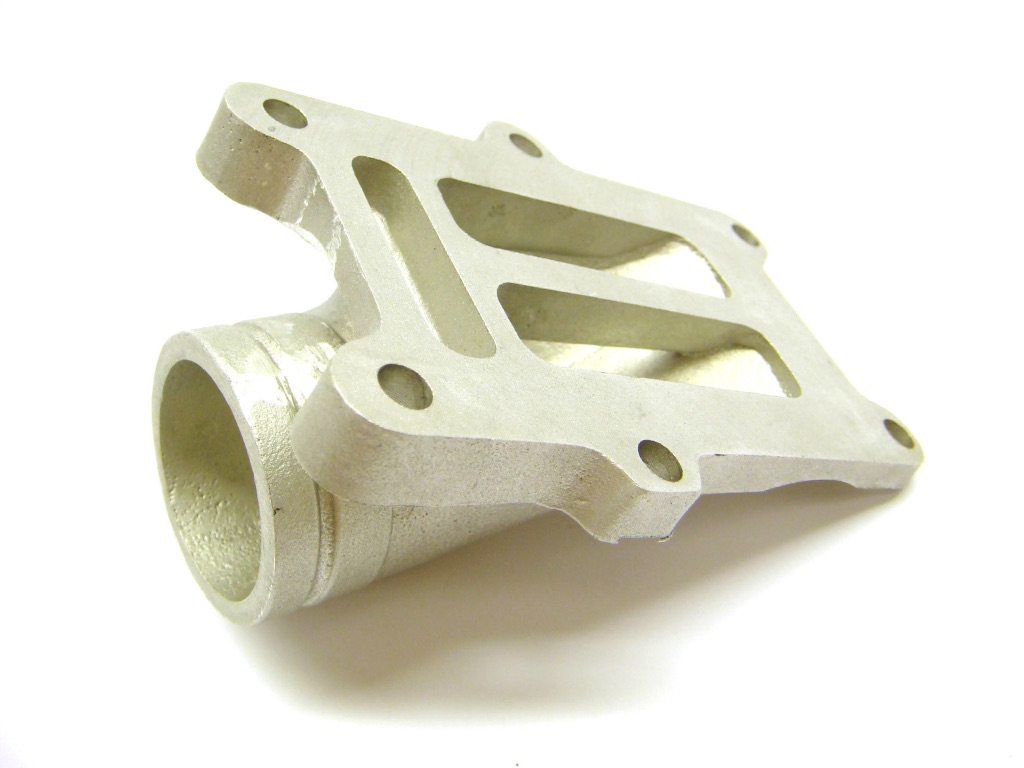
New shaped RB inlet manifold for Amal carbs!
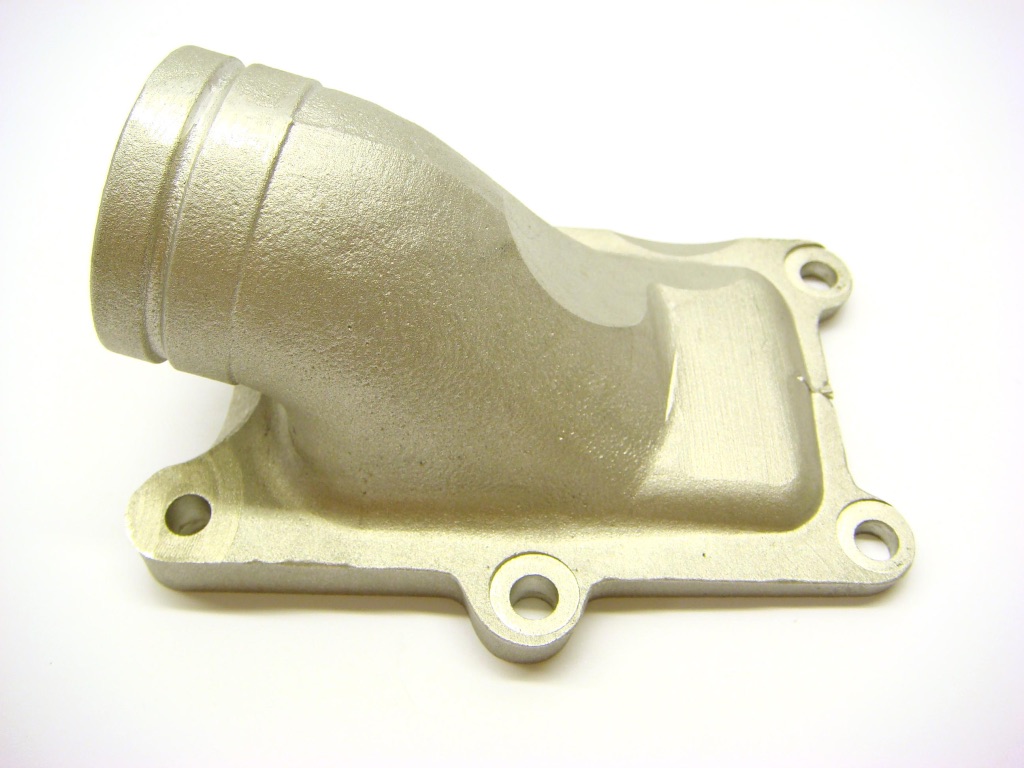
Manifold shaped to clear the frame
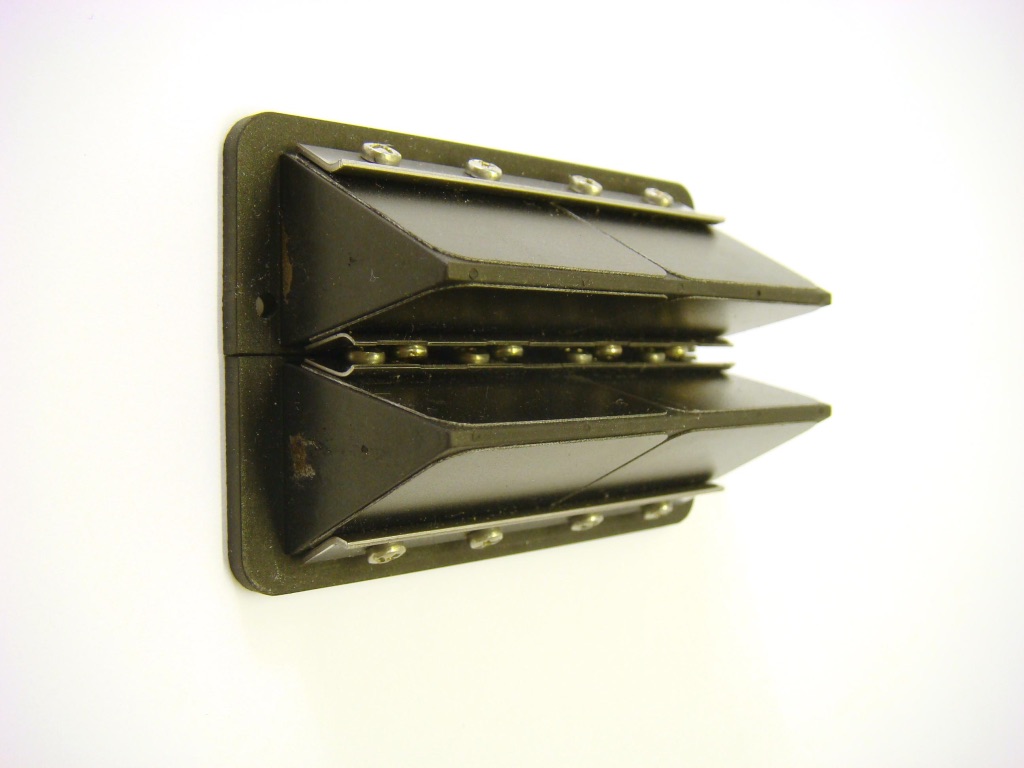
8 petal reed block similar to the V – Force design
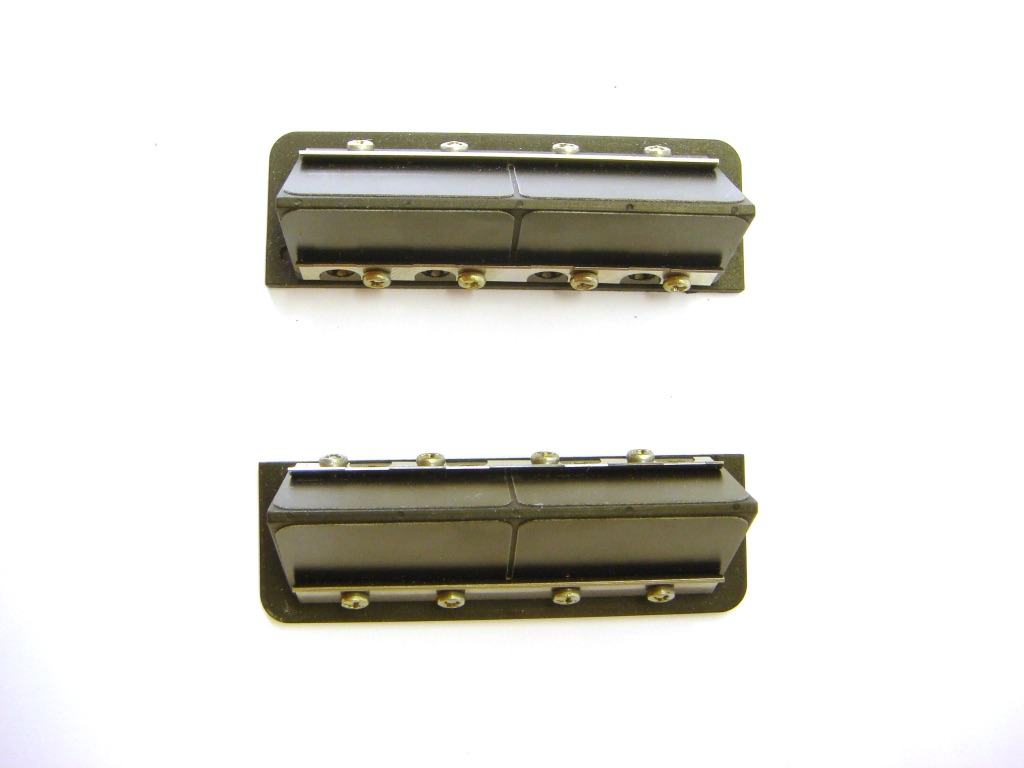
The clever spit 8 petal reed block
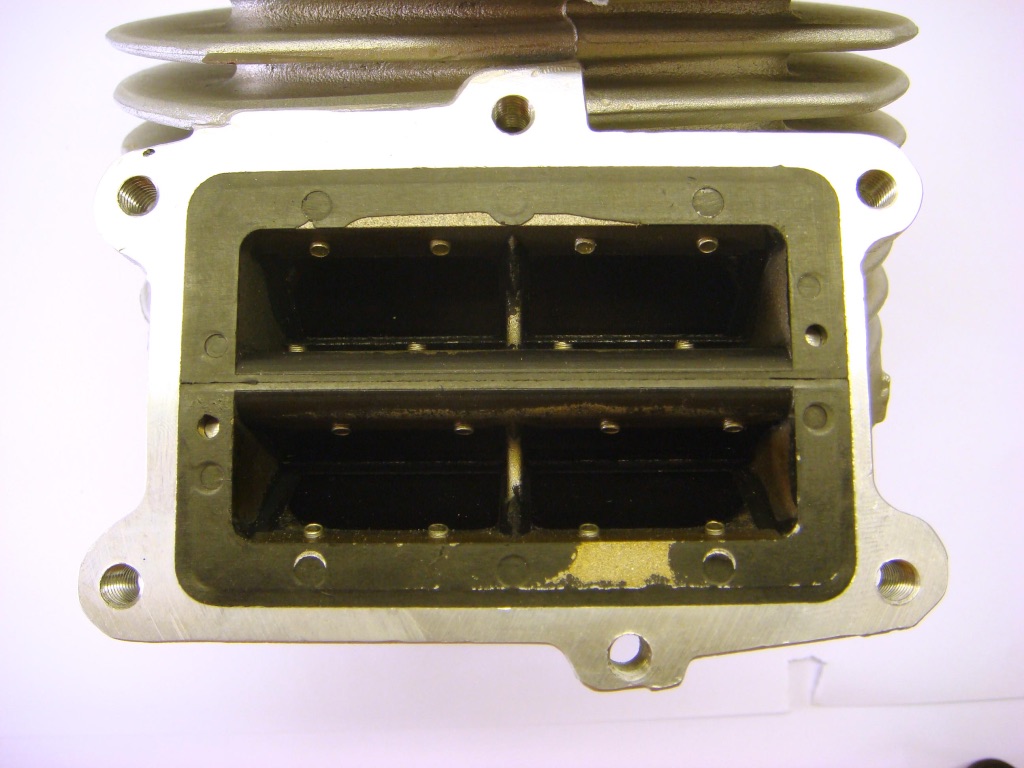
Snapped into position, I love it simple and works well a good idea
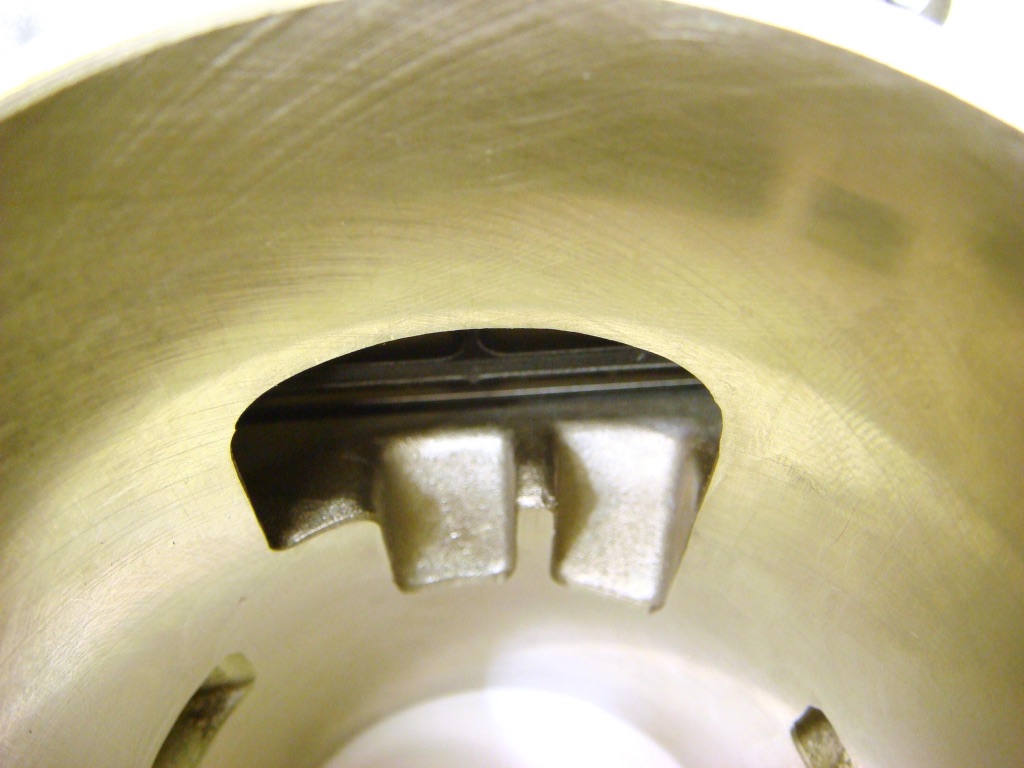
Two boost port feeds above the inlet port
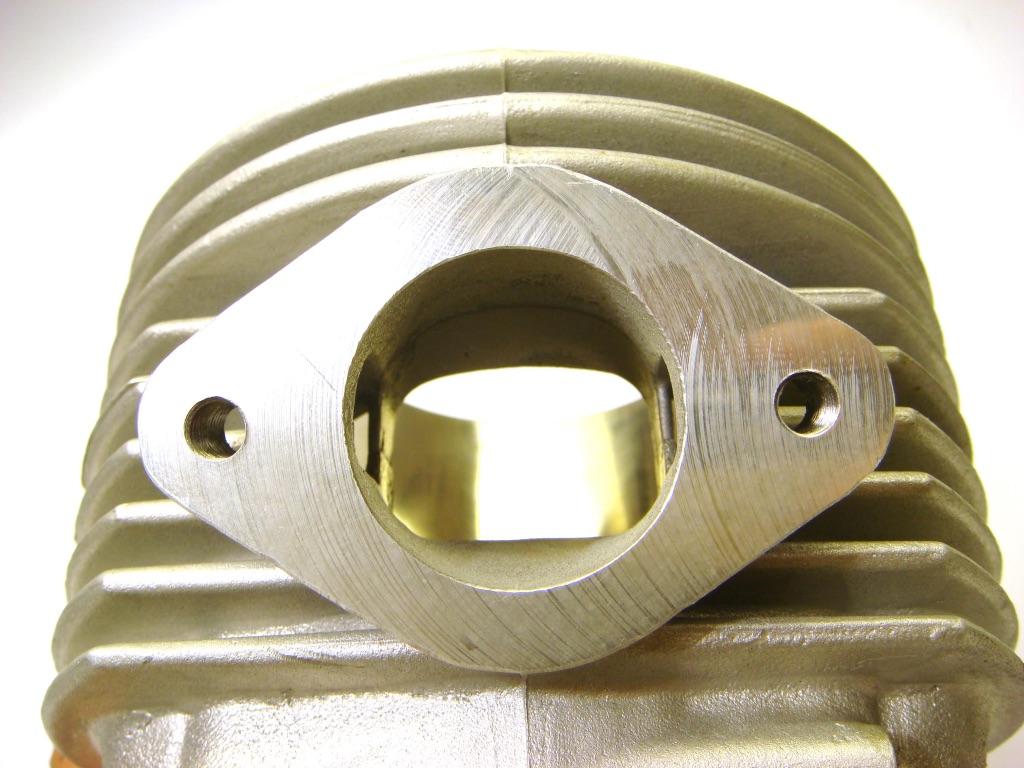
Sloped exhaust port, with TS1 gasket spacing, note the sub exhaust ports either side of the main exhaust port
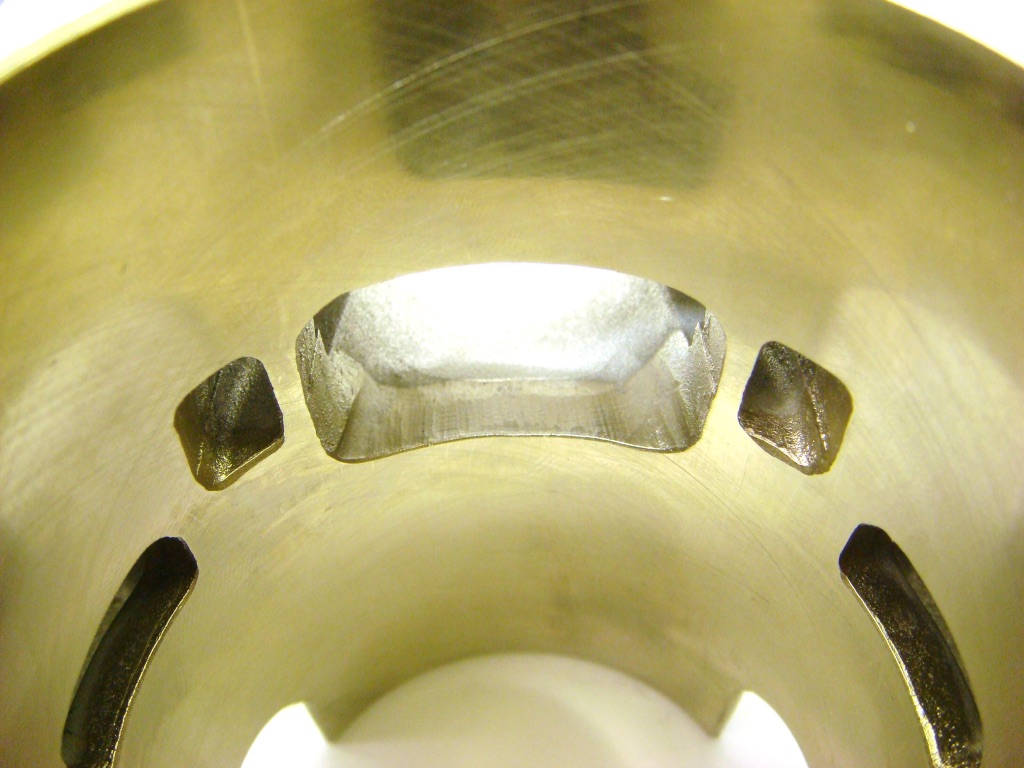
Main exhaust port with 2 sub ports, these cracked through the thin wall, later cylinders had a single exhaust port
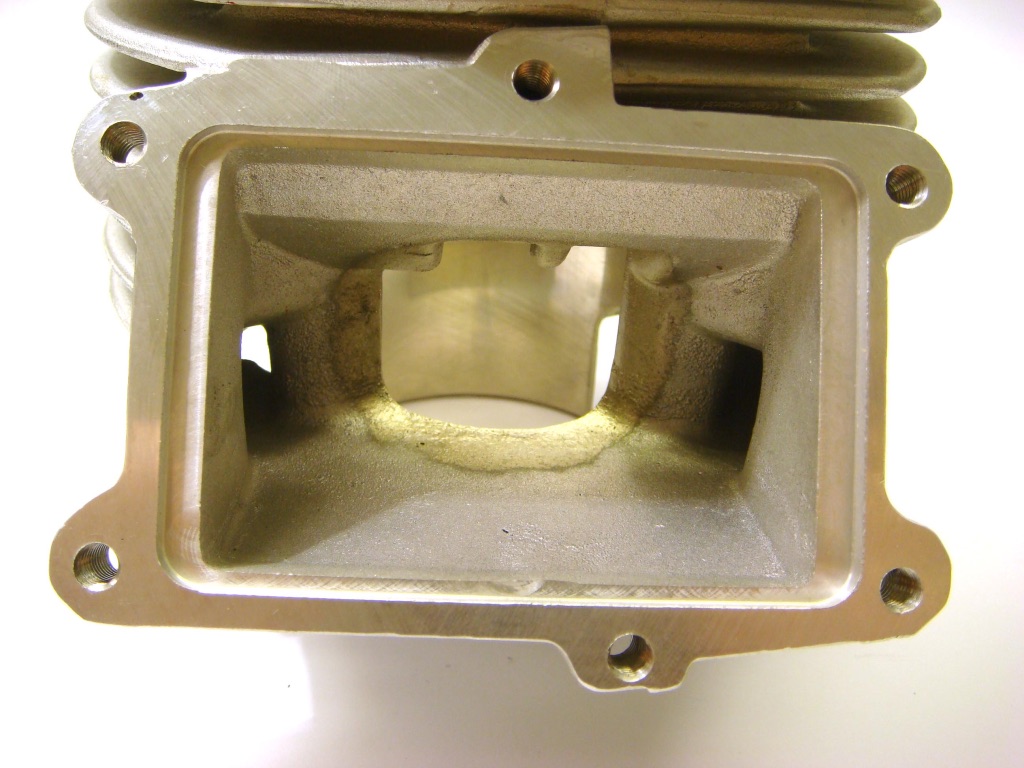
A massive inlet port showing the Boyesens sub inlet feeds into the transfers
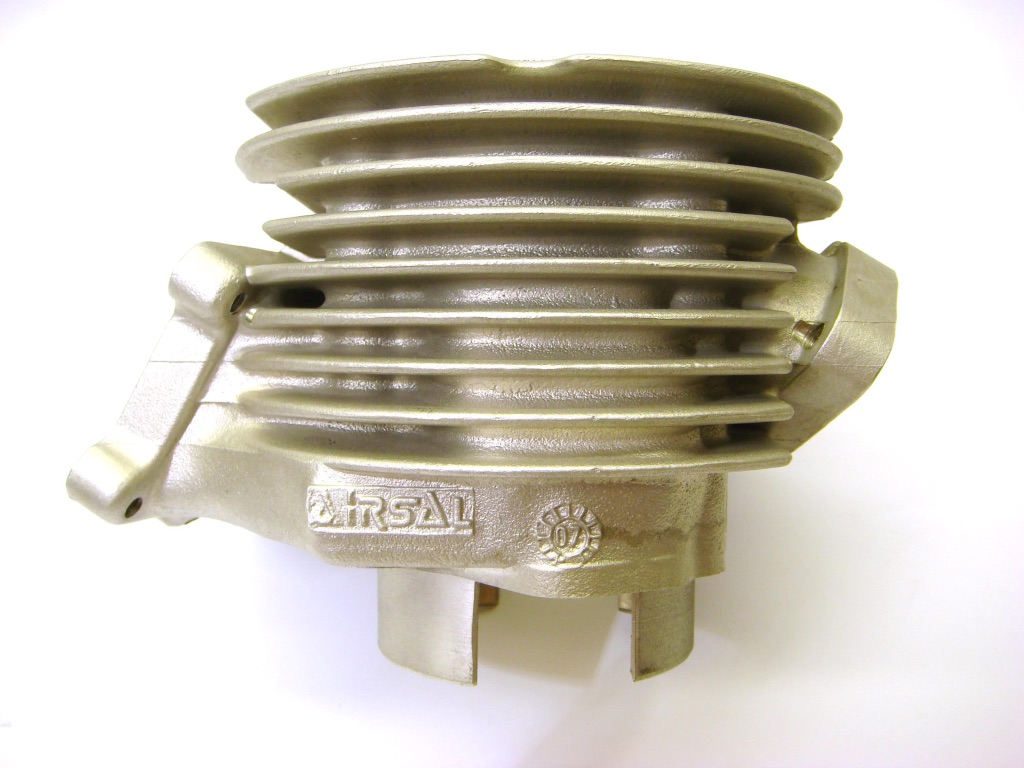
The RB with Airsal marked on it
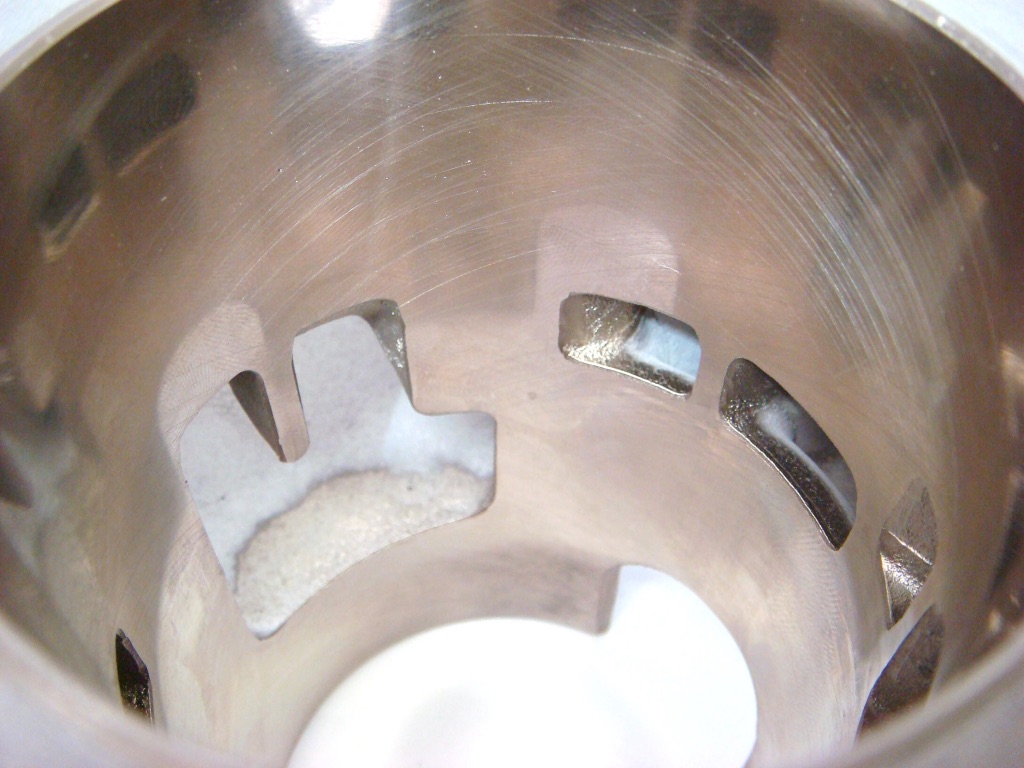
Showing the wider transfer ports, inlet and two boost ports
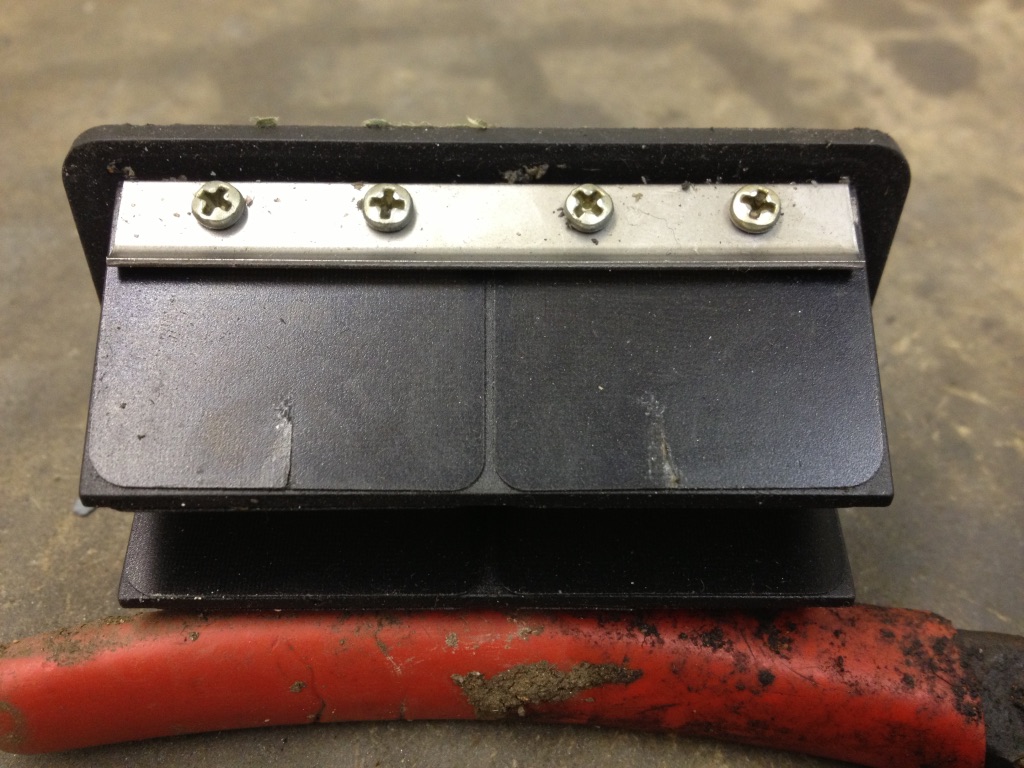
Be careful the reed petals are very wide with little support, petals can crack
Mark Broadhurst, If interested email mark@mbscooters.co.uk








